Trending
Opinion: How will Project 2025 impact game developers?
The Heritage Foundation's manifesto for the possible next administration could do great harm to many, including large portions of the game development community.

Featured Blog | This community-written post highlights the best of what the game industry has to offer. Read more like it on the Game Developer Blogs or learn how to Submit Your Own Blog Post
World of Warcraft has now been with us for ten years, dominating the MMO landscape in the Western market. From where did it spring, why was it so successful, and what has its influence been on MMOs?

Ten years of World of Warcraft. Well. So many thoughts.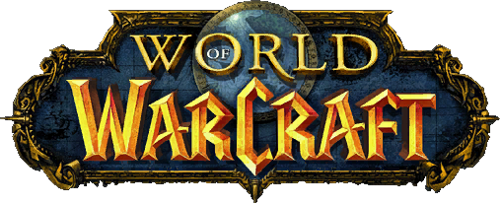
WoW has always been a contradiction of sorts: not the pioneer, but the one that solidified the pattern. Not the experimenter, but the one that reaped the rewards. Not the innovator, but the one that was well-designed, built solidly, and made appealing. It was the MMO that took what has always been there, and delivered it in a package that was truly broadly appealing, enough so to capture the larger gamer audience for the first time.
Don’t get me wrong; that’s not a knock on it. If anything, it’s possibly the biggest game design achievement in all of virtual world history. After all, we’re talking about taking a game skeleton that was at that point already almost a decade and a half old, one which had literally had hundreds of iterations, hundreds of games launched. None of them ever reached that sort of audience, that sort of milestone, that sort of polish level.
After a decade and a half of refinements that didn’t do the trick, Blizzard came along and did what it does best: cut to the essence, capture the core fun elements in a game system, and make them accessible and appealing to the broadest possible market.
These days, so many more people have passed through the gates of Azeroth than ever played its antecedents that many don’t even know the deep wellspring sources from which it came. Most of the defining characteristics of WoW are from a long tradition that started around 1990. WoW represents the (perhaps final) evolution of the DikuMUD model.
Dikus are one of many branches off the MUD family tree, and one of the most popular. They defined the pure hack n slash model of MUD gameplay for many. Fixed classes, a level-based grind, clearly defined zones with monster farming and (eventually) quests. A healer, a tank, a nuker in the form of a magic-user, with a heavy emphasis on grouping. Little sense of world persistence; everything always resetting, repopping, respawning. Its audience, from the get-go, was “the kind of people who find adventuring and role-playing more fun than hacking,” to quote the announcement post that appeared on rec.games.mud in February of 1991.
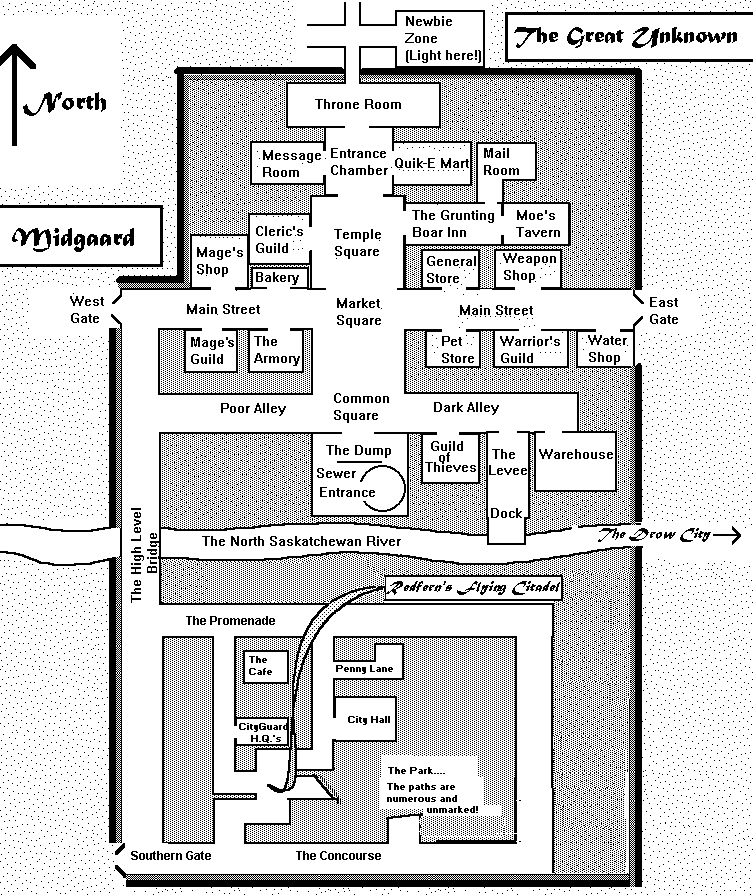 Diku proved popular because of its simplicity: everything in a Diku game was hardcoded, which meant you got a working game out of the box. All content was in rigidly defined text files – almost like rigid database entries, with no support for scripts or conditionals. This meant swapping zones with another mud was generally trivial. The ease of hacking the barebones source code meant that a number of “codebases” or modified distributions became available: Alfa, Copper, Circle, ROM, and so on, each slowly advancing the capabilities of the basic experience. Diku spread like a virus across the gaming Internet, and the phenomenon of the “stock mud” was born, where you could log into twenty successive games and find yourself in the same starting rooms of Midgaard.
Diku proved popular because of its simplicity: everything in a Diku game was hardcoded, which meant you got a working game out of the box. All content was in rigidly defined text files – almost like rigid database entries, with no support for scripts or conditionals. This meant swapping zones with another mud was generally trivial. The ease of hacking the barebones source code meant that a number of “codebases” or modified distributions became available: Alfa, Copper, Circle, ROM, and so on, each slowly advancing the capabilities of the basic experience. Diku spread like a virus across the gaming Internet, and the phenomenon of the “stock mud” was born, where you could log into twenty successive games and find yourself in the same starting rooms of Midgaard.
Many of the features we have come to expect from later MMORPGs didn’t originate from Dikus, it’s true. Housing in Dikus was a pale version of what was truly freeform in scriptable environments like MUSHes or MOOs. The flexibility of coding in LPMuds meant that most of the experiments that later became common features – from player-run guild systems to robust quests to procedurally generated environments – were first seen there, and then adapted into the far less flexible Diku codebases.
Dikus provided core inspiration to many of the earliest MMOs. Meridian 59 had its Diku players on the team. EverQuest was basically a love letter to Diku gameplay, inspired as it was very directly by the classic Sojourn MUD. Half of the original Ultima Online team was Diku players, though UO drew heavily from LPMud and even MUSH and MOO background, and therefore set off in its own, more sandboxy direction.

At the time that WoW was in development, there were two big MMOs launching. The Sims Online was featured on the front cover of Newsweek, and tipped to be the game that could take virtual online play mainstream. It had an enormous budget, and of course the power of the Sims brand. The other was my own project, Star Wars Galaxies – another powerful brand, but also far too short a development time and a quarter of the budget.
Both launched buggy, messy, rough, criticized for tedious gameplay. Both offered many innovations. But it didn’t matter: the juggernaut was coming.
WoW had been in development for a very long time, and unlike those other two titles, it was very much directly drawing its inspiration from EverQuest. EQ, the reigning king of Diku-style gameplay, was always resolutely about group combat. At the high end of play, membership in “raids” (which at the time simply meant “big fights against tough monsters”) was the online teamwork game par excellence.
Rather than try to break new ground on features, WoW set out to instead collate the very best from every game it could, with a relentless focus on the fun. Where other games were chasing high-end graphics, they chose instead to aim low on technical requirements, opening up the potential playerbase considerably, while relying on stunning art direction that was initially decried as cartoony, but which was vivid and colorful and appealing in a way that the grittier other games were not.
And WoW indeed took many of the core features that other games had established, and by and large made them better through the alchemy of recombination and polish.
In Blizzard’s hands, raids became intricate puzzles to be solved, almost like teaching a large group a complex series of dance steps; a design idea drawn, perhaps, from boss stages in 2d bullet hell shooters. Given the influence that EQ raiders had on the WoW design team, it’s no surprise that to this day, raids are the engine driving WoW forward in so many ways.
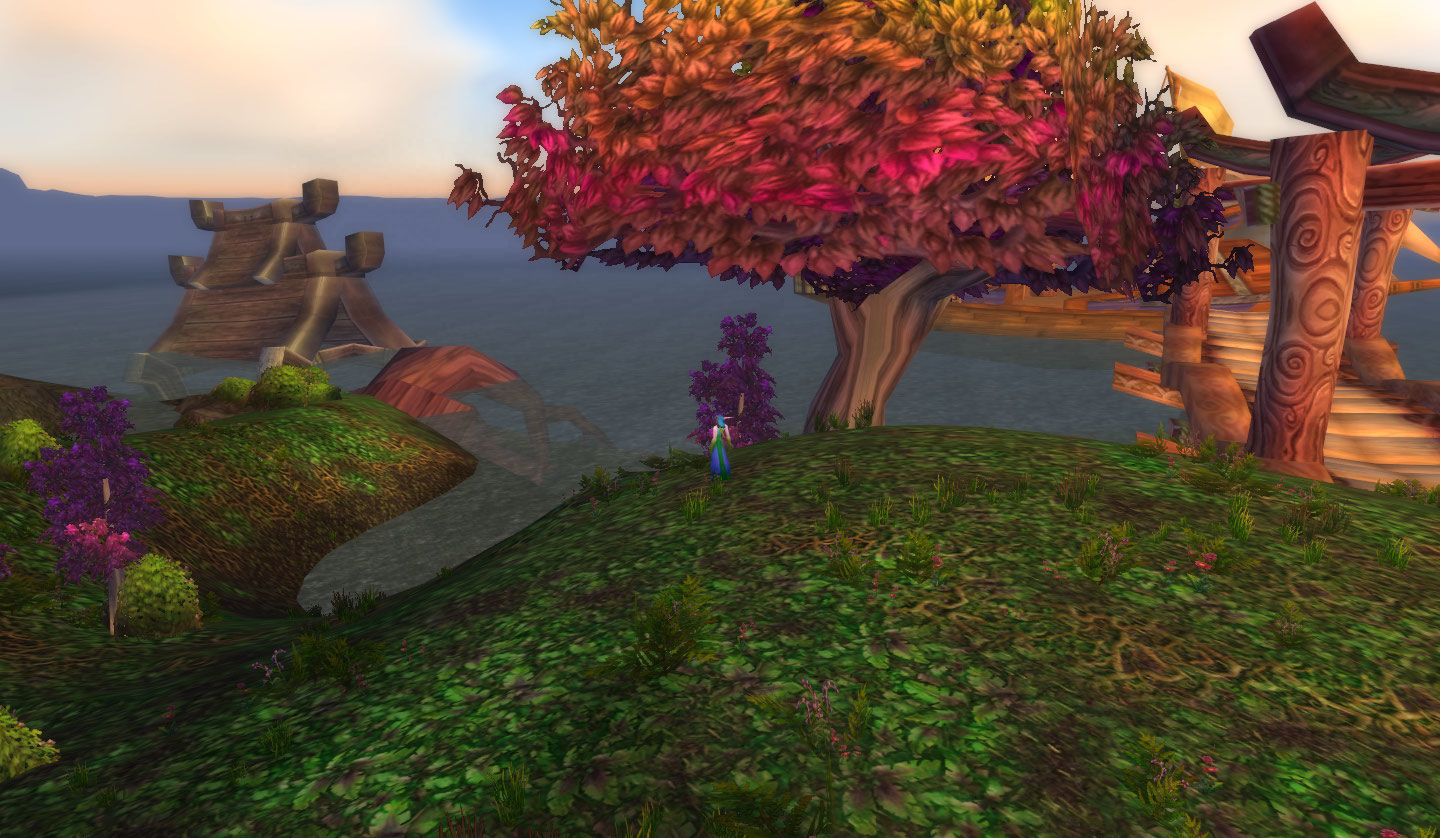
A related tool, instancing, had been invented clear back in the text mud days, but in WoW we saw it used to a degree that earlier MMO designers were reluctant to embrace. Seeing it as disruptive of the “worldness” of the game, myself and many other designers at the time pushed back against making too many dungeons into instances, arguing that the serendipity of meeting other players was core to the genre. But intricate raid patterns set up as patterns to solve can’t survive that sort of unpredictability, so WoW used instancing liberally, making high end encounters feel ever more like embedded games or challenges in their own right. This had the interesting effect of reducing inter-guild contact, but strengthening the bonds within guilds as teams had to go through training regimens and practice sessions.
The realm versus realm combat that lay at the core of Dark Age of Camelot fit perfectly atop the Warcraft mythos; the underlying PvP flagging system was a variation on flagging systems explored in many muds, and of course famously and endlessly in Ultima Online. We forget, now, how contentious player-vs-player combat was, in those days, and how hard a design problem it was to make it feel seamless. It had been decided that the days of the PvP MMO were basically over, and yet WoW launched with what was basically a PvP MMO and managed to make it feel like a safe space for players.
The chat bubble system had been a massive design challenge on Star Wars Galaxies (chat bubbles had been used in 2d games, such as Habitat and The Realm, and There.com had done some extremely interesting stuff with them which I happily stole, but most MMO designers, alas didn’t play There); WoW cheerfully leveraged that work, as well as redoing their camera system during the beta to be surprisingly similar to SWG’s.
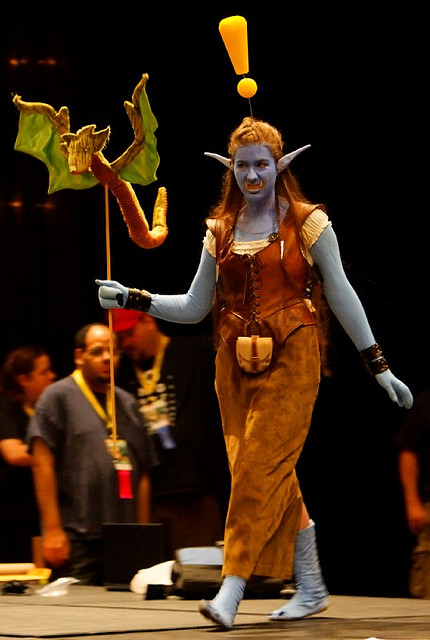
Among the things left by the wayside were features that were proven. Gone were the richer pet systems that had driven so much engagement from players in earlier games. Player housing, past and future source of endless devotion (and revenue) in other games, absent. Never mind stuff like towns and politics and the like. Crafting took massive steps backwards from the heights it had been developed into in Galaxies or even Sims Online, and went back to being more like that in EverQuest. Even the robust character customization that we slaved over in Galaxies, a system which today is in every RPG on earth (but which, I cheerfully admit, we also mostly nicked ourselves, from There.com) was gone. In WoW, you basically looked how you looked, and early on the game was a sea of identical clones. The seamless world, which occupied so much technical effort from so many teams, was simply replaced with by-then-old-fashioned zones with network mirroring on the boundaries: a much simpler use-case than solving dynamic load balancing.
None of this is to minimize the effort this took; the work of selecting the right features to make World of Warcraft was precisely the hardest work there was. In the name of shorter sessions, greater accessibility, and easier entry, WoW cut away any “world-like” features in favor of Game, Game, Game.
In their place was one overriding feature, a true innovation that WoW lifted not from the rich and varied history of MMOs, but from the rising design tide in AAA games that was even then up-ending the first-person shooter: the quest-led game.
FPSes in the wake of Half-Life were moving towards today’s world of cinematic narratives intercut with vivid action; Blizzard had successfully made the cinematic campaign a centerpiece of its RTSes such as Warcraft 3. MMOs, however, were still fairly aimless affairs, always struggling with delivering even a coherent tutorial experience. Despite the name, EverQuest was far more about the fighting than stories – the questing in the title was really each player’s own quest for experience points. Even in Blizzard’s own RPGs, the Diablo series, we saw an MMO-like “hub-and-spoke” design, always pulling players back to one central town.
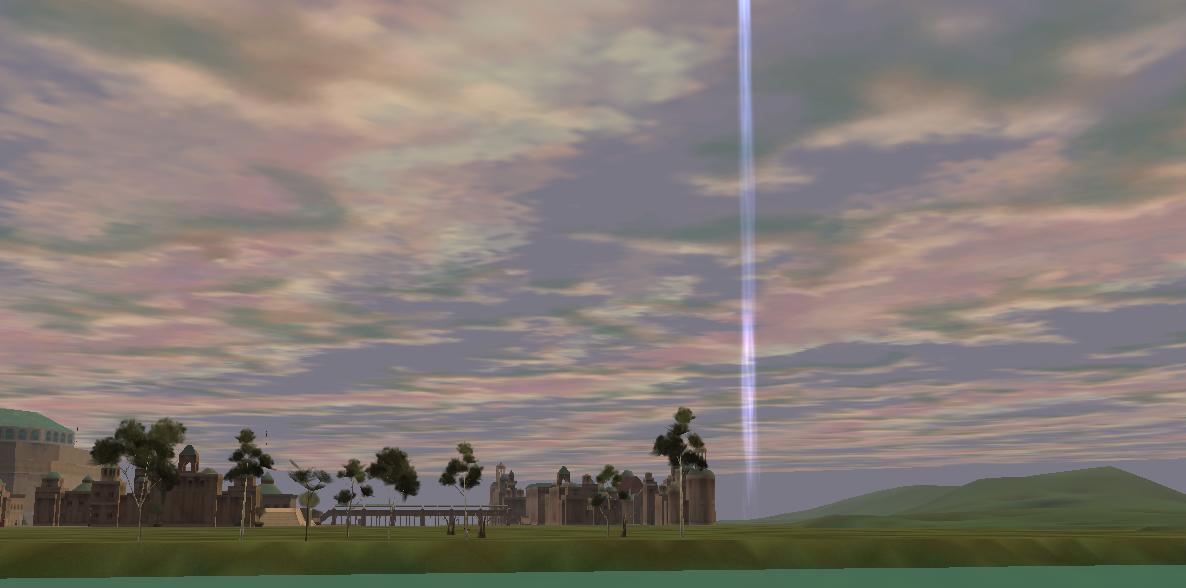
In WoW, despite the word “World” in the title, we saw linearity displace the free-roaming assumptions of the earlier games. Whereas games like Everquest 2 and Galaxies had invested heavily in waypoint systems that had proven to be powerful social and accessibility tools, WoW left this feature out because the game simply never had you travel a long way – the next goal was generally always within line of sight. Helpful symbols floating above characters’ heads, which had barely been seen in MMOs such as Asheron’s Call 2 (they originated in Blizzard’s own Diablo 2), were everywhere.
And the quests, while still built on top of familiar fetch or kill-n-monsters tropes, were also everywhere. A heretofore unthinkable density, much of it deeply humorous and rich with references to Warcraft lore for those who were willing to dig in. For the casual player, the experience of WoW was literally a series of quest completions designed to lead you along a pathway that had been carefully planned to constrain you, keep you always seeking the next glowy mark over an NPCs head.
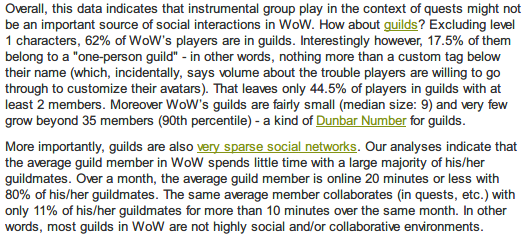
This completely up-ended the old MMO pattern, which was more about hunting and gathering, interrupted with occasional quests. In WoW, leveling gameplay was instead about questing, with occasional hunting and gathering. Zones and their quests were crafted hand-in-hand, with the quest chains perfectly designed to lead you across the zone as it increased in difficulty, and birth you out into new zones just as you should reach the point of advancing to the next set of levels. It could only be done with an extravagant budget; indeed, WoW outspent all previous Diku games by a multiple of three or four. But it was incredibly powerful.
Sandboxy players found this to be a massive step backwards. In effect, there was hardly any open space; everything was dense, close together. The rich interdependence systems that were carefully crafted in earlier MMOs were absent. But players who had cut their teeth on single-player games had finally found a virtual world that was accessible to them, where they could “play alone together.” Paired with the power of Blizzard and the Warcraft brand, we watched WoW pick up more players in the first week than the entirety of the Western MMO market combined.
In some ways it was the apotheosis of this game design. Today, the influence is everywhere. To be an MMO has come to mean to be like World of Warcraft. The quest-driven advancement path. The tried and true combat mechanic and the raids. The interface must now conform, much as how FPSes on PC were forever condemned to WASD based on the popularity of specific games. WoW is now the template and the bar that everything must hit.
It’s not a hittable bar, for most. Almost no Western MMOs have ever been granted a comparable budget again, and of course these days, you have to actually compete with ten years’ worth of WoW expansions and additional content and refinements. Slowly, some of those omitted features have crept back in – WoW’s class system is today a much more flexible hybrid class-and-skill system that offers ample personal expression. Given time, the game economy re-acquired some of the characteristics of the sandboxy games – but not too much, in order to retain the focus.
![]() And the game that was once called, by me and many others, “the least social MMO on the market,” is now the virtual home away from home for millions, as network effects, familiarity, and its ongoing dedication to a great user experience above all makes it makes the place we always return to. It is the genre king, and likely will never be toppled by a game like it, as long as investment in it continues. We likely will not see true reinvention come to the space until there are massive changes in content delivery, such as near-unlimited cloud server power, or virtual reality displays, that both permit and force truly different experiences to be created.
And the game that was once called, by me and many others, “the least social MMO on the market,” is now the virtual home away from home for millions, as network effects, familiarity, and its ongoing dedication to a great user experience above all makes it makes the place we always return to. It is the genre king, and likely will never be toppled by a game like it, as long as investment in it continues. We likely will not see true reinvention come to the space until there are massive changes in content delivery, such as near-unlimited cloud server power, or virtual reality displays, that both permit and force truly different experiences to be created.
The space it entered as a competitor is largely “dead” in the sense that WoW takes up all the oxygen in the room. Experiments in virtual world design began to dry up, to curtail their ambitions to being nibbles around the edge of WoW’s design. Like toothpaste squeezed out of a tube, the design qualities of sandbox games ended up finding their expression elsewhere, to great success. Their children served as the basis of genres, from Facebook farming games to DayZ-style survival games to the true heir of the MUD tradition: Minecraft, a virtual world based on simulation and crafting, where users run their own worlds and script and build adventures and are basically questless.
It’s just that no one calls them MMOs anymore. That title is reserved for World of Warcraft, and those largely similar games that strive to topple it from its seat. Its influence is such that it now defines the genre it refined. It is the best Diku ever made; the best combat MMO ever made; the thing to which everything like it will ever after be compared. World of Warcraft effectively made MMOs perfect, and in the process, it killed them.
[Crossposted from my blog, where the images have captions!]
Read more about:
Featured BlogsYou May Also Like